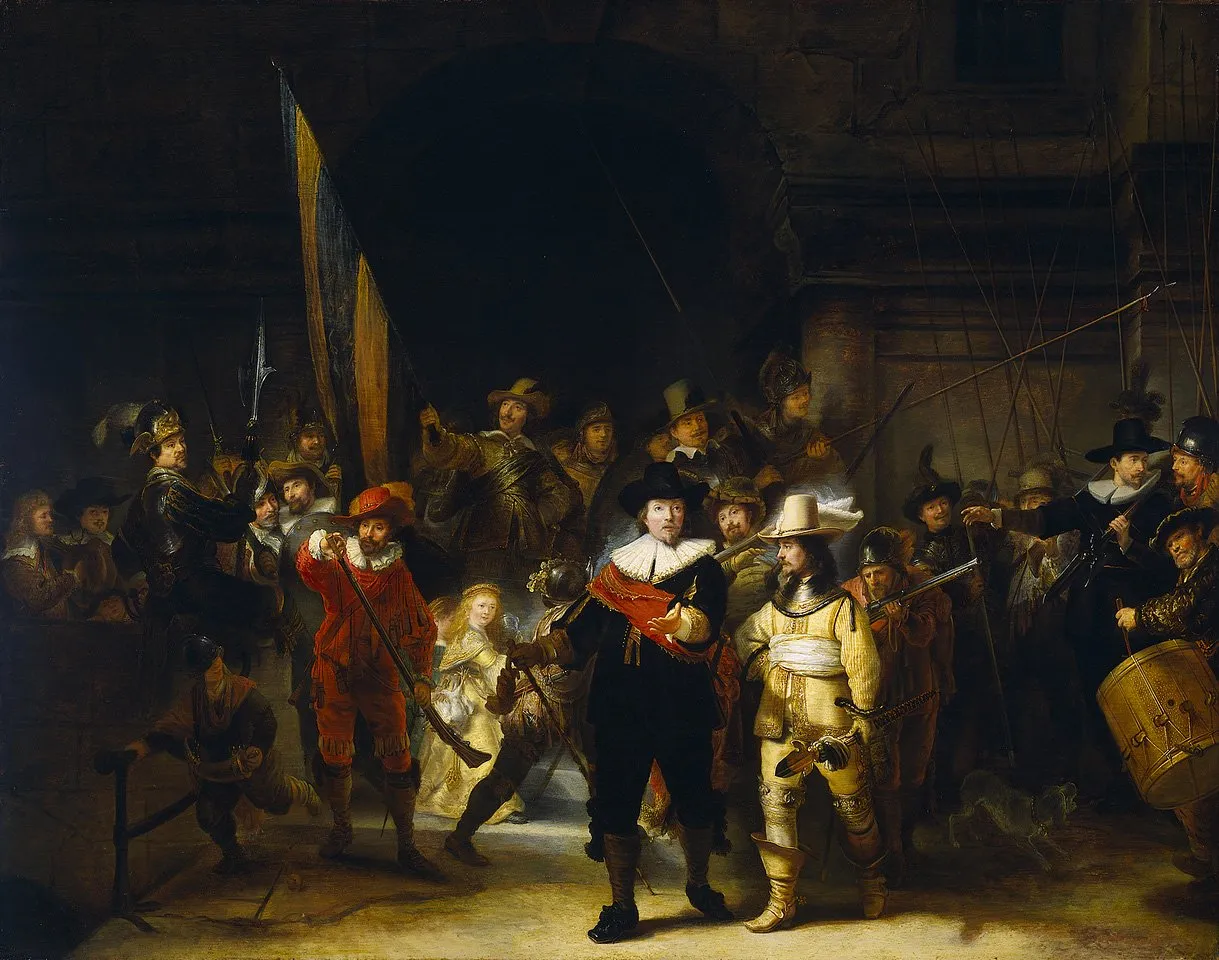The Night Watch, more precisely known as The District II Military Company under the command of Frans Banninck Cocq and Willem van Ruytenburgh, is one of the most famous paintings by the Dutch artist Rembrandt Van Rijn.

This is a military portrait painted in 1642 and commissioned by Captain Banning Cocq to hang in the recently built House of Arquebusiers in Amsterdam, or perhaps to honor the visit of the French Queen in exile Marie de Medici.
The painting depicts a number of militia members, many of them holding muskets, clustered in a dark street in what appears to be the middle of the night. Among them, bathed in a white light, stands a mysterious and enigmatic person dressed in white, who leaves an angelic or heavenly impression.

THE HISTORY OF THE TABLE
The District II Military Company under the command of Frans Banninck Cocq and Willem van Ruytenburgh (The Night Watch) is one of the most famous paintings of the Dutch Golden Age and continues to be representative of the works of that era.
Suspended in the House of Arquebusiers at its beginnings, it was finally moved to the Amsterdam City
Hall in 1715 and then to the Trippenhuis during the Napoleonic occupation. He was finally moved to the Rijksmuseum in 1885 when it was built.
During the Second World War, to protect the painting from damage, his frame was removed to wrap it around a wooden cylinder, and then stored in a castle north of Amsterdam. Once the war was over, he was put back on his frame and returned to the museum from which he had left.
Half a century later, in 2003, it was moved again during a renovation of the Rijksmuseum, to be returned 10 years later once the work was completed. He lives there now, untouched for several years.
The Night Watch was vandalized many times during its existence, especially by two people who slashed the painting with a knife - once in 1911 and again in 1975, twice damaging the painting. The second vandal committed suicide in a psychiatric institution less than a year later, his treatment being unrelated to his act for which he was never sentenced. Attempts to restore the painting were largely successful, though by examining it carefully, small imperfections are still visible.
The work suffered an acid attack in 1990, although luckily the acid was rapidly diluted with water, only slightly damaging the surface of the varnish layer of the painting.
INFLUENCE
This very recognizable painting inspired many imitations and parodies through the centuries and even reproductions carved in 3 dimensions. The work was also the subject of a 1995 American film with the same title, a fictional work starring Pierce Brosnan and Alexandra Paul, on the theft of the painting in Amsterdam.